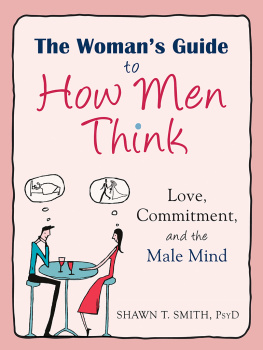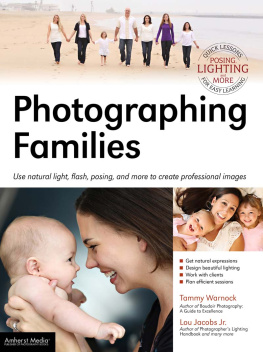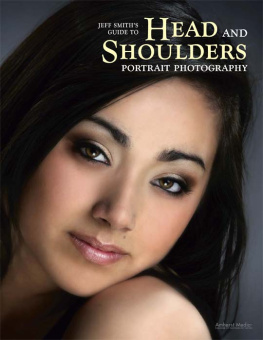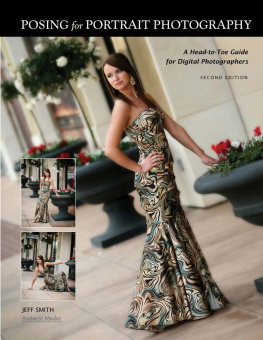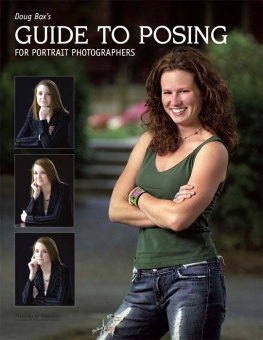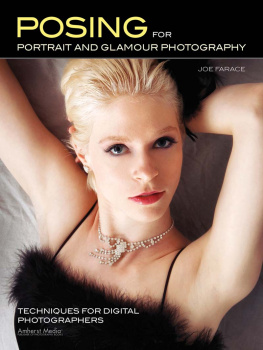
Copyright 2012 by Jeff Smith.
All rights reserved.
All photographs by the author.
Published by:
Amherst Media, Inc.
P.O. Box 586
Buffalo, N.Y. 14226
Fax: 716-874-4508
www.AmherstMedia.com
Publisher: Craig Alesse
Senior Editor/Production Manager: Michelle Perkins
Assistant Editor: Barbara A. Lynch-Johnt
Editorial Assistance from: Chris Gallant, Sally Jarzab, John Loder
Business Manager: Adam Richards
Marketing, Sales, and Promotion Manager: Kate Neaverth
Warehouse and Fulfillment Manager: Roger Singo
ISBN-13: 978-1-60895-457-5
Library of Congress Control Number: 2011942803
10 9 8 7 6 5 4 3 2 1
No part of this publication may be reproduced, stored, or transmitted in any form or by any means, electronic, mechanical, photocopied, recorded or otherwise, without prior written consent from the publisher.
Notice of Disclaimer: The information contained in this book is based on the authors experience and opinions. The author and publisher will not be held liable for the use or misuse of the information in this book.
Check out Amherst Medias blogs at: http://portrait-photographer.blogspot.com/
http://weddingphotographer-amherstmedia.blogspot.com/
TABLE OF CONTENTS


T here are so many aspects to professional photography: lighting, composition, camera angles, exposure, color balance, and of course posing. While each of these is important in the creation of a professional portrait, posing is unique. I can teach a staff photographer to set up lighting, then meter and color balance my lighting properly in about six months. I can teach someone critical lighting adjustment in about two years. Composition and camera angles might take a little longer. But posing is something that typically takes years to masterand quite frankly you never completely master it because, if done correctly, it is constantly evolving.
This book is different from the others I have written on posing. While I will be explaining the many aspects of posing, this book relies heavily on the illustrations to show you exactly how to pose each type of client. If you have read one of my other books on posing, you may see some things you have read about beforebut the question isnt whether you have read it before, but whether you have actually put the information to use. This book will do you no good if you dont take it to your studio or outdoor location with a subject to practice on and put all the techniques to use.
You cant learn posing just by reading a bookor, for that matter, by memorizing the entire range of poses you see in this book. You have to practice the poses you see and learn to make adjustments in the poses for variables, such as height, weight, and body size. A pose that looks amazing on the person you see in this book might not look the same on the first person you pose. Differences in a persons proportions, flexibility, and even how comfortable or rigid the person is in front of the camera, make a huge difference in the way they look in any given pose.
You also have to use common sense when posing and avoid making clients get outside their comfort zones. While a family portrait might look great with the grandmother kneeling or lying in the middle of the group, if she is old and unable to get down to the ground and back up, her discomfort in having to be helped into the pose will make her look tense no matter how comfortable you try to make her in the pose. The same is true for dads and grandfathers. If you make their poses too fashionable or hard to get into, the unique look of the pose will be overshadowed by their uneasiness. With small children, it is much more comfortable to bring the adults down to their level than to bring them up to the level of the adults.
In all my books, I show clients, not models. It does you no good to learn how to pose perfect people from a book and then work daily in the studio with non-perfect clients. In our studio, we specialize in senior portraits, which means that a good portion of the people in this book are high school seniors.

P osing can help achieve many of the things that are vital to creating a professional-quality portraita portrait that a client will buy.
Posing, first and foremost, must make the client look amazing. You must understand how each part of the face and body is best posed, and then bring together all the individual parts to make the entire pose successful.
Once you make the client look amazing, you must ensure that the pose youve used works well within the composition. It should contribute to an overall finished and professional look. You cant have a portrait that is out of balance because the pose doesnt work within the composition or with the way you have chosen to crop the image.


When posing, the first objective is to make the subject look great.

Arms, thighs, and legs can be positioned to create striking lines and curves in the body, adding so much to the final look of the portrait.
The next step is to pose the body to create more interest within the frame. The lines and curves of the human body can create an artistic look within the frame. The classic S curve that a womans body forms when posed correctly is elegant and beautiful. Arms, thighs, and legs can be positioned to create striking lines and curves in the body, adding so much to the final look of the portrait.
The last part of posing is understanding the people we photograph. The psychology of posing requires that you understand the human condition. To effectively pose your clients and the sell the resulting portraits you must give your client an image that depicts a version of reality they can live with. You must decide what areas of the client will show in the portrait and hide or disguise the ones they will not want to see.

The process I use to pose all the parts of the body together as an entire pose is simple. I look at the clothing and talk with the client about how much of herself she wants to show. Many times clients realize they have weight issues and request that we do all of their images in a head-and-shoulders composition. If this a client requests this, do it. Dont embarrass a client showing parts of her body she obviously doesnt want to see.
If the subject does want to take a full-length pose, I look at the womans body type and the way the clothing is lying on her body. While I can do more to hide problem areas in seated poses than standing poses, often the clothing will not allow seated posing.
Next page






